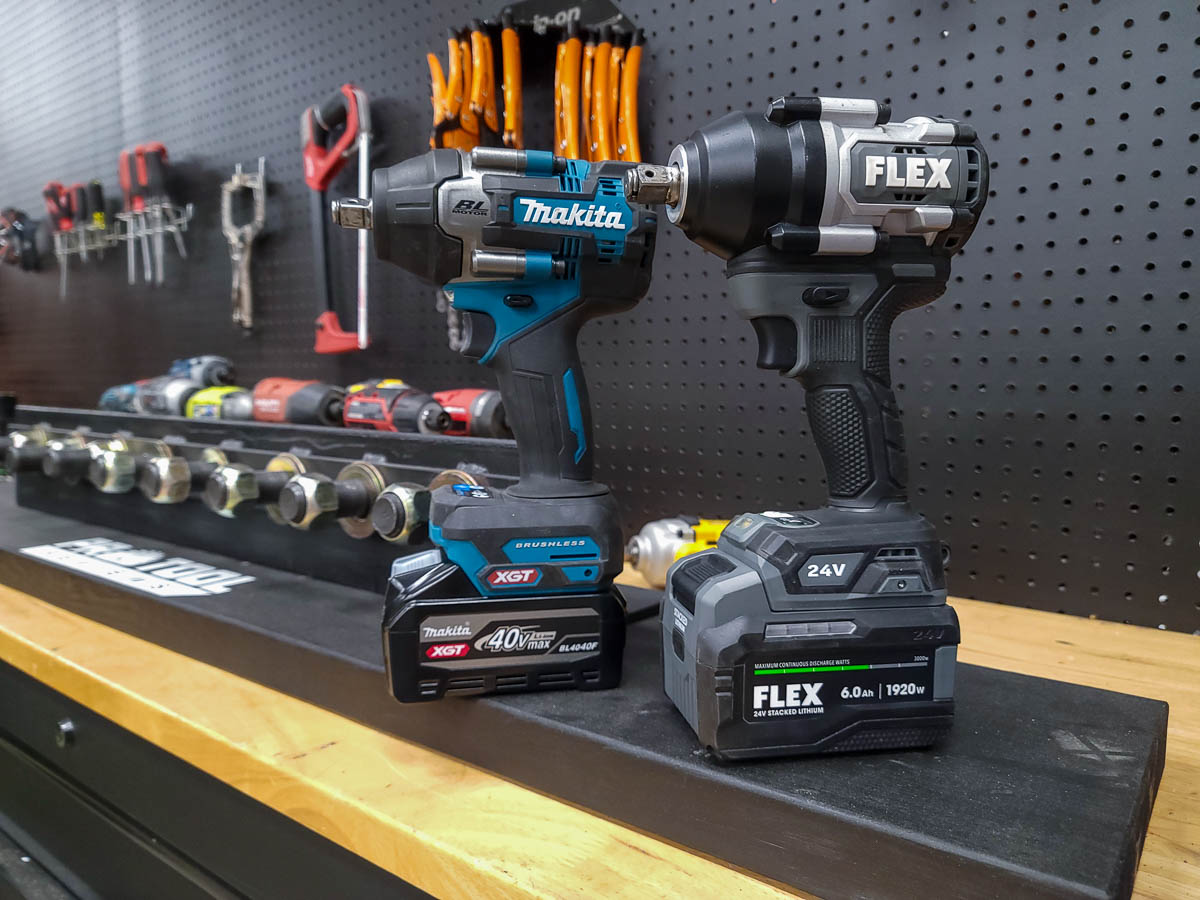We just wrapped up testing ten of the most popular mid-torque impact wrenches from brands you know and trust. Now, we’re highlighting two key contenders: the Flex FX1451 and the Makita GWT07. Both models are packed with Pro-level features and are built to handle the rigors of the jobsite. But which one truly comes out on top in a head-to-head challenge? Let’s break it down and find out.
See the full results of our Best Cordless Impact Wrench head-to-head testing!
Makita VS Flex Impact Wrench Specifications
Here’s a quick look at the key specs to know before we jump into testing:
| Makita GWT07 | Flex FX1451 | |
|---|---|---|
| No-Load Speed | 2,300 RPM | 2,700 RPM |
| Max Impact Rate | 2,900 IPM | 3,100 IPM |
| Max Breakaway Torque | 810 ft-lbs | 750 ft-lbs |
| Max Fastening Torque | 560 ft-lbs | 600 ft-lbs |
| Head Length | 6.63 in. | 6.25 in. |
| Bare Weight | 4.38 lbs | 4.29 lbs |
| Working Weight | 6.45 lbs (with 4.0Ah High Power XGT battery) | 6.58 lbs (with 6.0Ah Stacked Lithium battery) |
Makita VS Flex Impact Wrench: How We Tested
It all starts with battery selection. For this, we went with a 4.0Ah High Power XGT battery for Makita and a 6.0Ah Stacked Lithium battery for Flex. We understand that these aren’t necessarily the same batteries that come in the kits, but we wanted to choose the battery that gave us the best performance without being excessive.
Bolt Break Test

This test is all about breakaway torque. We start by tightening eight 1 1/2-inch lug nuts down to 500 ft-lbs using a specialized torque wrench and time how long it takes each tool to loosen all eight nuts. This gives us a solid, real-world representation of each tool’s capabilities.
Lag Bolt Test
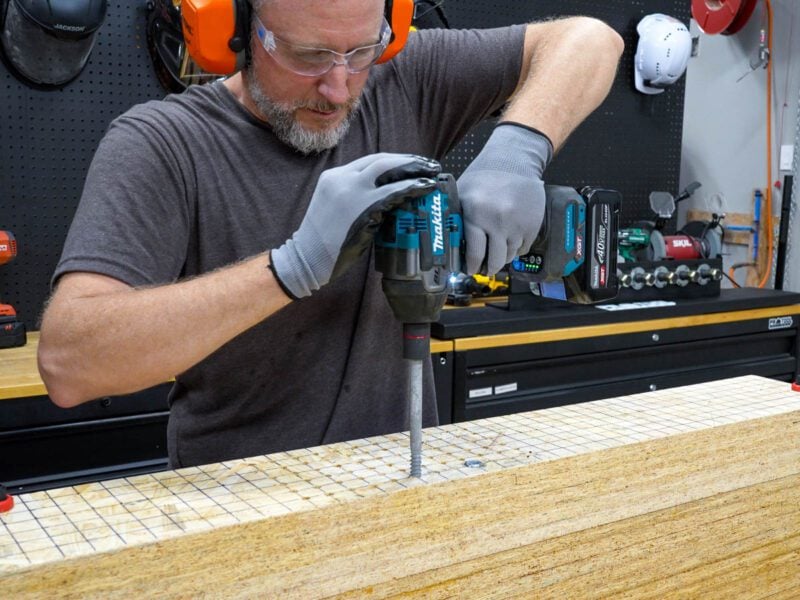
In order to test the fastening torque, we drive a 10 x 1/2-inch lag bolt into a laminated OSB test block. Each tool has 30 seconds to sink the lag bolts. If the bolt is not completely sunk, we measure the inches remaining as our data results. This is a tough ask for most mid-torque impact wrenches, but it’s a good test that displays the raw driving power of these tools.
Inertia Torque Test
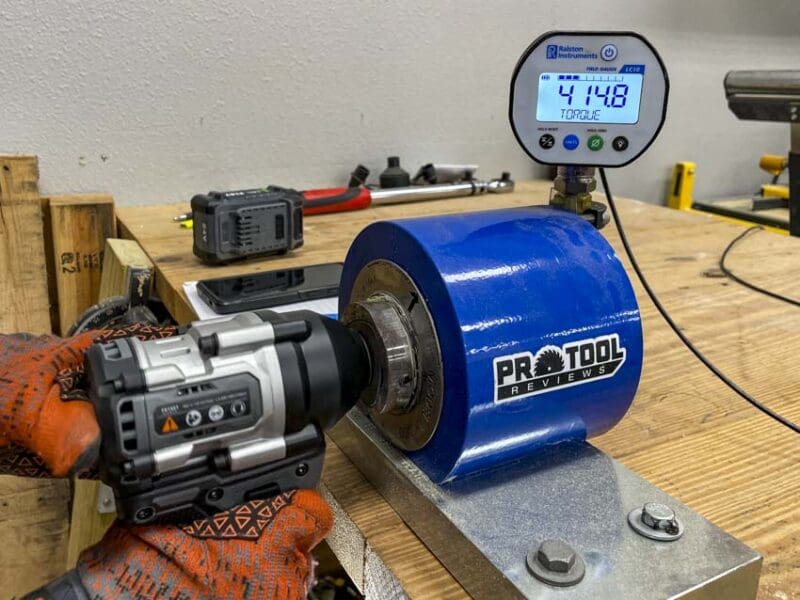
The last test we ran measures torque using an L1000 torque tester from Inertia Torque. This is very different from our other tests because it only tests torque without speed or impact rate coming into play.
Our method is to run three 5-second intervals with a 3-second break between and take the highest torque reading. This helps us understand how much actual torque the impact wrench is producing, and it is different from the method manufacturers use to rate their impact wrenches.
Testing Results
| Makita GWT07 | Flex FX1451 | |
|---|---|---|
| Bolt Break Test | 32.62 sec | 26.69 sec |
| Lag Bolt Test | 2.00 inches remaining | 1.12 inches remaining |
| Inertia Torque Test | 502.3 ft-lbs | 414.8 ft-lbs |
From the data, it’s clear that Flex is the winner in our applications tests, breaking all eight nuts almost a full 6 seconds faster than the GWT07. Neither of these tools managed to sink the 10-inch lag bolt (DeWalt’s DCF891 is the only one that did), but Flex did drive it down with 1.12 inches remaining while Makita left the bolt 2 inches proud after 30 seconds.
Where Makita did shine was during the Inertia Torque test, where it cranked out 502.3 ft-lbs while Flex only got up to 414.8 ft-lbs. So, if it’s raw power you’re after, Makita is the stronger tool.
But if Makita has posts with higher torque specs, then how did Flex take the lead? Well, the answer is simpler than you might think.
Yes, Makita has higher torque specs, but the Flex FX1451 impact wrench has a higher impact rate and top speed. Flex’s hammer mechanism strikes the anvil much faster than Makita’s, allowing it to progress through our tests faster, even though Makita really was hitting harder.
So while the Makita GWT07 is still a formidable tool and boasts some of the highest torque specs in the mid-torque class, Flex’s superior speed and impact rate propelled it to the finish line.
Makita VS Flex Impact Wrench Key Highlights
Makita GWT07
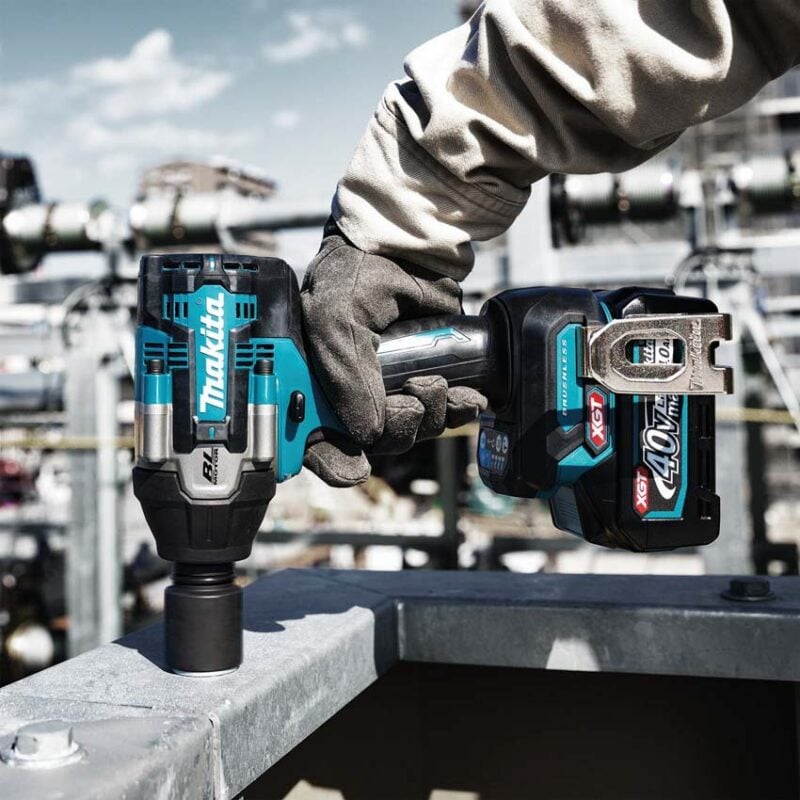
- Brushless motor
- 3 speed modes with 3 assist modes
- XPT dust and water resistance
- Vibration-reducing battery isolation zone
- Available with either hog ring or pin detent anvil
Flex FX1451
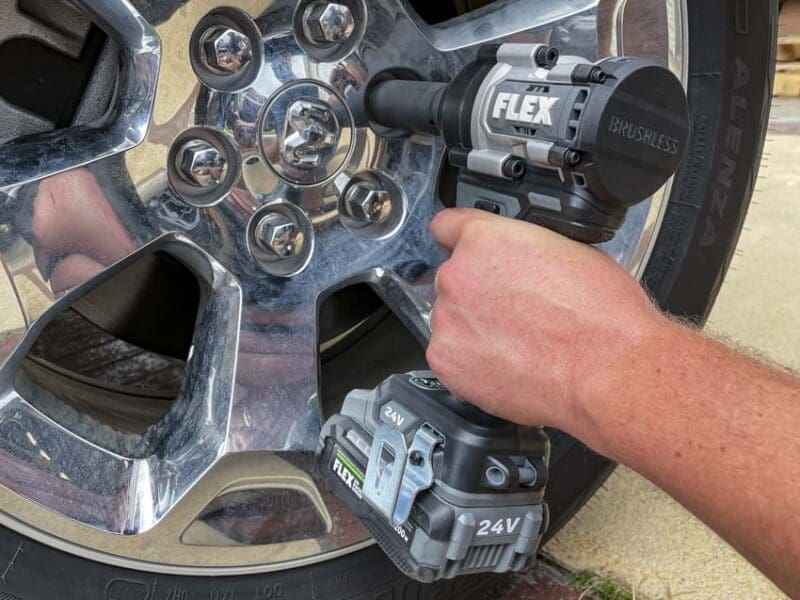
- Brushless motor
- 3 speed modes with 2 auto control modes
- Vibration suppression technology
- Tether ready for working at height
Pricing and Final Thoughts
| Configuration | Makita GWT07 | Flex FX1451 |
|---|---|---|
| Bare Tool | $394 | $199 |
| Kit | $609 (with 2.5Ah battery) | $299 (with 5.0Ah battery) |
| Kit #2 | N/A | $329 (with 3.5Ah Stacked Lithium battery) |
| Warranty | 3-year | 5-year (lifetime with registration) |
After all of our hands-on testing and analyzing the data, the Flex FX1451 is our winner today. Flex showed off genuine Pro-grade power during our testing, not to mention the kit is significantly less expensive than Makita’s.
Now, make no mistake, there is still a strong case for the Makita GWT07. While the FX1451 does have a few speed and assist modes, Makita’s electronics suite is much more sophisticated and tailored for specialized applications. With that in mind, if you need a more technical tool or you’re looking for higher torque, Makita is the way to go.
With that said, I would still lean towards Flex for the way I work. The price is reasonable, the ergonomics are solid, and it has more than enough power for most medium-duty applications. On top of that, the Flex 24V lineup is very broad and includes a wide variety of tools and lifestyle items that all work off the same battery ecosystem. Add in the lifetime warranty when you register your purchase and it’s a value that’s too good to pass up.

